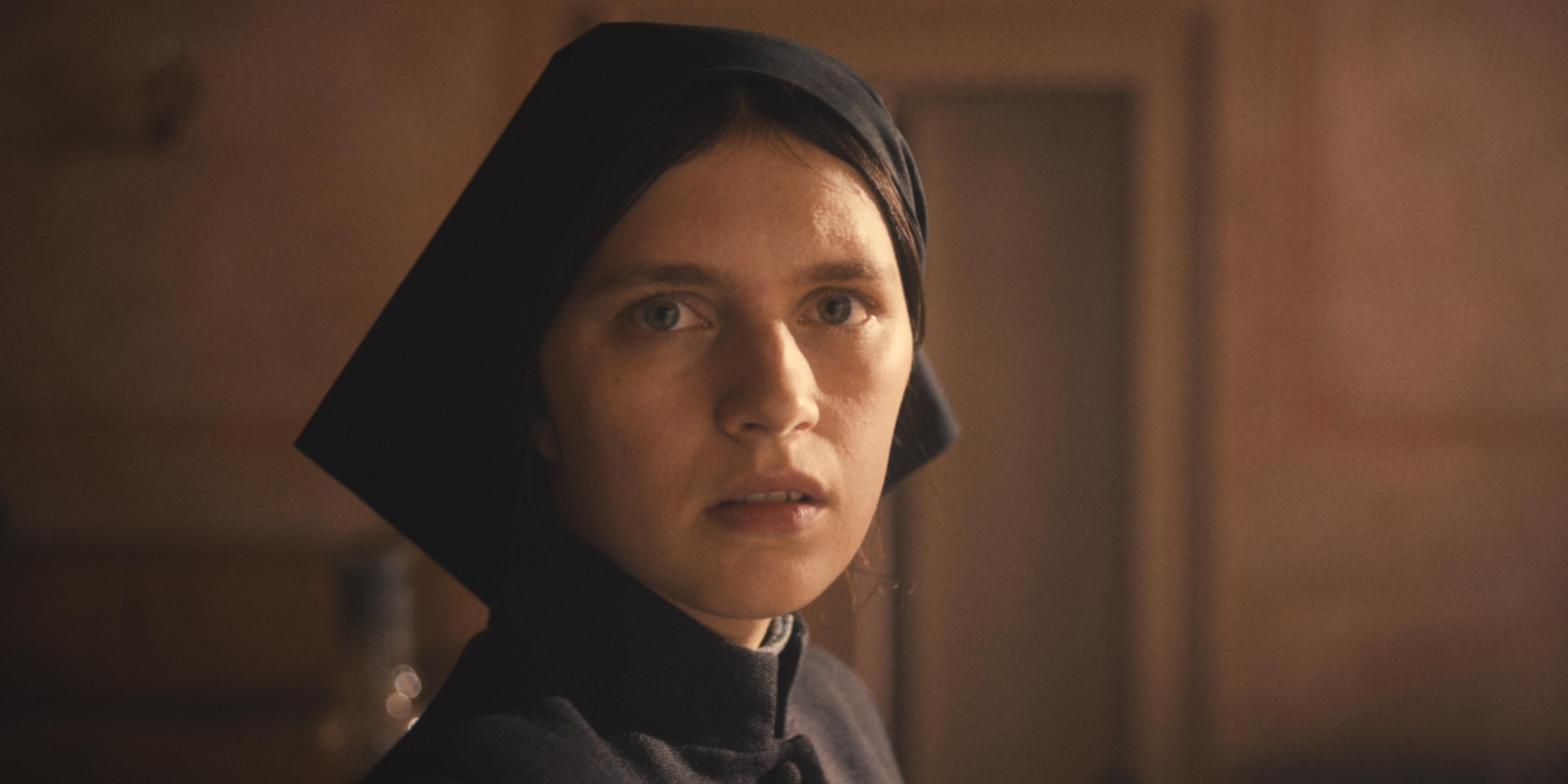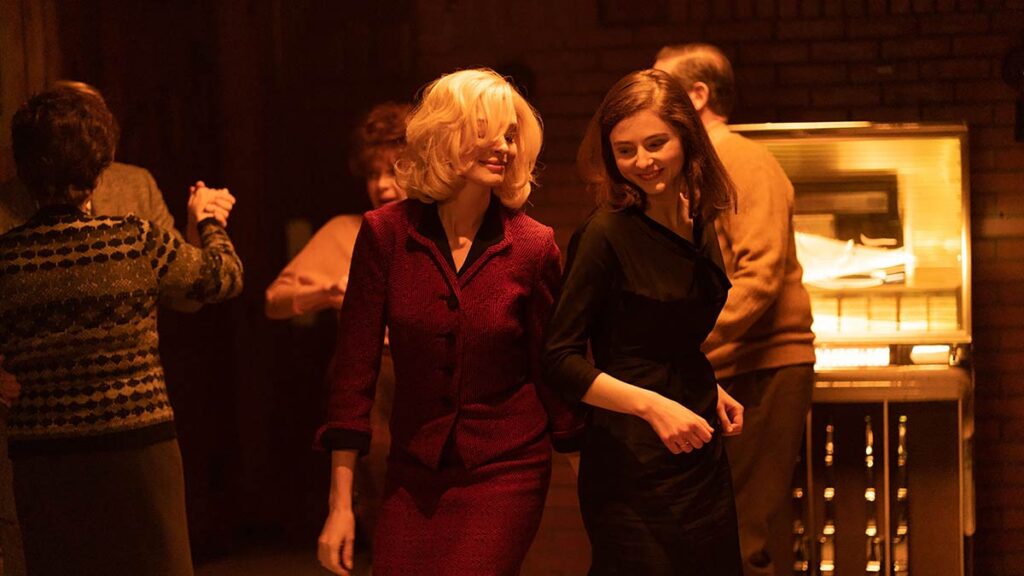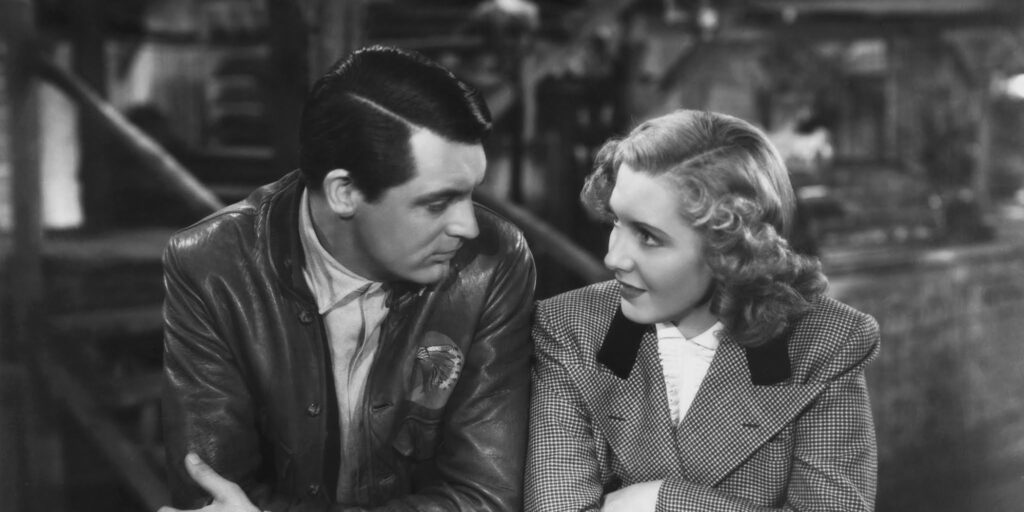The horror genre doesn’t exactly have an encouraging track record lately when it comes to prequels, reboots, requels, and all the other cinematic flotsam that one might lump together under that dreadful catch-all “intellectual-property exploitation.” The past few years have given us a couple of forgettable Scream legacy sequels (2022, 2023) and a big-swing Halloween conclusion (2022) that ended up crashing and burning. Everywhere one looks, it seems like there are legions of low-effort duds in the vein of Firestarter (2022), Texas Chainsaw Massacre (2022), The Exorcist: Believer (2023). (On the other hand, the big-name horror titles seem to be faring much better on the small screen, with the likes of Chucky and Interview with the Vampire.)
A horror aficionado could therefore be forgiven for assuming that The First Omen – a 48-years-late prequel to Richard Donner’s 1976 satanic blockbuster – would prove to be yet another dire exhibit in franchise horror’s present era of idea-starved insipidness. Fear not: Much as Luca Guadagnino’s grotesquely wicked Suspiria remake (2018) defied expectations, writer-director Arkasha Stevenson has slithered her way past the corporate gatekeepers at 20th Century Studios to birth an unholy bundle of joy into the world. It might be obligated to indolently check a couple of franchise boxes, but The First Omen is otherwise one of the weirdest, gnarliest, most strikingly crafted studio horror films in recent memory. Evidently given a free hand to shape this unnecessary, unwanted prequel, Stevenson embraces an eccentric style subtly reminiscent of 1970s horror filmmaking, but also offers up her own bold, blasphemous reinterpretation of the original feature’s comparatively quaint conception of the Antichrist.
Central to the success of The First Omen is Nell Tiger Free, fresh from establishing her horror bona fides on four seasons of the underappreciated AppleTV+ series Servant (2019-23). Wide-eyed and willow-slender, the 24-year-old British actress excels at the tight smile and flinching frailty that recall a perpetually terrorized child. This makes her a snug fit for the role of Margaret Daino, an American novitiate who has essentially been a ward of the Roman Catholic Church for her entire life. Encouraged by the kindness long shown to her by one Cardinal Lawrence (Bill Nighy), Margaret has arrived in Rome to formally take her vows and begin working at a Church-run girls’ orphanage. Once a self-described “problem child” with an overactive imagination, Margaret has a natural rapport with her young charges, who are garbed in faded, lacy frocks that look like they’ve been reused since at least the Mussolini regime.
However, Margaret is particularly drawn to the 13-year-old Carlita Scianna (Nicole Sorace), a nearly mute outcast with the long, stringy hair and deranged artistic sensibilities that are de rigueur for creepy horror-movie children. Carlita spends most of her days confined to the black-walled “Bad Room,” which, as Abbess Silvia (Sônia Braga) explains to Margaret with a hint of snippy exasperation, is where bad girls must stay. Meanwhile, the novitiate overhears worrying conversations through cracked doors and observes ominous shapes lurking in dark hallways. Sister Anjelica (Ishtar Curried-Wilson), a young nun with demented eyes and a cracked smile, seems to shadow Margaret’s steps, muttering creepily. In a grubby, outdated obstetrics ward where “women in trouble” give birth to the next generation of Church-raised orphans, Margaret collapses when she catches a glimpse of … something.
Sinister events are plainly afoot at the orphanage, and they appear to be swirling around Carlita. This would be obvious even if the viewer didn’t know that they were watching an Omen prequel, owing in part to the film’s prelude, in which a guilt-wracked Father Harris (Charles Dance) gives his confession to another priest, Father Brennan (Ralph Ineson, lending his gravelly rumble to a character portrayed by Patrick Troughton in the 1976 film). Harris admits to his willing participation in a vile conspiracy and hands Brennan a ragged photograph of a newborn child, just before an abrupt and fatal accident involving a stained-glass window.
Long before the Final Destination series made a generation of horror fans inordinately wary of log-related highway fatalities, the Omen films were famous for the unlikely “accidental” deaths that seemed to befall anyone who threatened the ascendance of Satan’s spawn. However, Stevenson is doing more here than tipping her hat to Donner’s original – and, to a limited extent, to the other three increasingly crummy feature films in the mainline series. (There was a mostly forgotten remake in 2006, as well as the altogether memory-holed 2016 Lifetime sequel series, Damien, but it’s hard to imagine those as having ride-or-die fans.) As the filmmaker cuts pointedly to those windows dangling from creaking ropes and scaffolds, it’s clear that an improbable yet spectacular mishap is about to occur. When the moment comes, Stevenson lingers on it with a kind of ghastly eroticism, edging the viewer to the moment of bloodletting in ultra-slow-motion, while Mark Korven’s tremendous score keens like a choir of fallen angels.
Astutely discerning that its franchise identity locks her feature into delivering a few gruesome deaths and hitting specific plots beats – whatever else is retconned, Damien Thorne must be born, or this isn’t a prequel to The Omen – Stevenson leans into the theme of predestination to conjure a pall of asphyxiating doom. Not since Hereditary (2018) or possibly The Dark and the Wicked (2020) has a horror feature maintained such a potent atmosphere of utter futility. Every character is well and truly fucked long before the film’s events even begin, resulting in the sick-stomach sensation of being trapped on a roller coaster that’s about to plummet into a pool of flaming brimstone.
Margaret, of course, doesn’t know that she is in an Omen prequel, and the horror of Stevenson’s film is that of impotently spectating as a naïve but pure-hearted young woman blunders into a spider’s web of unholy conspiracy. That Margaret is both a devout Catholic and an instinctive ally of marginalized innocents only intensify the unjust monstrousness of it all. As the novitiate’s own childhood experiences begin to come to light, it becomes clear just how much the empathy of lived experience is driving Margaret’s protectiveness towards Carlita. Those formative memories skitter mockingly at the periphery of the woman’s awareness, enabling gathering evildoers to gaslight and discredit her. The First Omen isn’t anything so pedestrian as yet another horror film about trauma, but it does highlight a grim truth: None are so easily controlled by abusers as those who are already deeply traumatized.
In 1976, The Omen descended on the pop-cultural landscape to feast on a burgeoning interest in dubiously “biblical” eschatology, a trend shaped in no small part by notorious evangelical crackpot and conman Hal Lindsey (The Late Great Planet Earth). It’s a trend that has gone through periodic resurgences thanks to Lindsey successors such as Tim LaHaye and Jerry B. Jenkins, creators of the noxious yet laughably ham-fisted Left Behind series. Rather than returning to this well, The First Omen reimagines its namesake’s story for a more skeptical and cynical era. Abandoning the increasingly goofy and unimaginative literalism of the original film series – in which a set of magical Antichrist-slaying daggers pinball through the plot like shards of Kryptonite – Stevenson and co-writers Tim Smith and Keith Thomas turn the notion of a satanic conspiracy inside-out. (At risk of giving too much away, let’s just say the calls are coming from inside the house.) The result is still unambiguously a supernatural horror film, but one in which black-and-white notions of holy Church and unholy secularism are revealed as so much desperate religious propaganda. The Devil might exist within the film’s world, but humankind needs no prodding to perpetrate the most depraved evils imaginable.
The First Omen is a revelatory feature debut for Stevenson, whose previous credits include a couple of short films and helming duties on horror and horror-adjacent series such as Channel Zero, Legion, and Brand New Cherry Flavor. Her direction exhibits the confidence and maturity of a filmmaker who has absorbed the work of the greats – Argento, De Palma, Polanski, and Roeg, among many others – and used those lessons to nurture her own unconventional style. Shot on 35mm by cinematographer Aaron Morton (Orphan Black), The First Omen has the broad look and feel of a 1970s feature, complete with soft lighting, arty insert shots, and peculiar music cues. Other aspects of its design feel distinctly contemporary, particularly the post-Conjuring way it plays with obscuring shadow and negative space. Free’s performance likewise straddles diverse influences, alternately channeling Lili Taylor, Mia Farrow, and – in one unforgettable, maybe brilliant, maybe hilarious scene – Isabelle Adjani in Possession (1981).
Like The Hills Have Eyes (2006), Halloween II (2009), and Doctor Sleep (2019, Director’s Cut only, please), Stevenson’s film presents a compelling counterargument to the contention that nothing interesting can be extracted from the dross of corporate-owned intellectual property. On rare occasions, The First Omen is straightjacketed by its franchise obligations, particularly in a sore-thumb coda that seems to be setting up a reboot one might title The Omen: Final Fantasy VII Remake. (It also drops Damien Thorne’s name as if the Antichrist were a third-string Marvel villain, to loudly underwhelming effect.) These are nitpicks, however, for a film that otherwise makes a strong case for the value in revisiting the dustiest horror texts, reading between the lines, and finding terrifying new revelations therein.
The First Omen is now playing in theaters.




